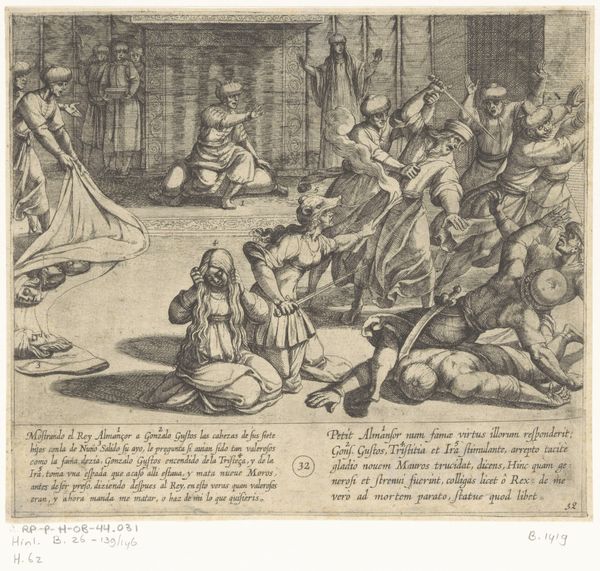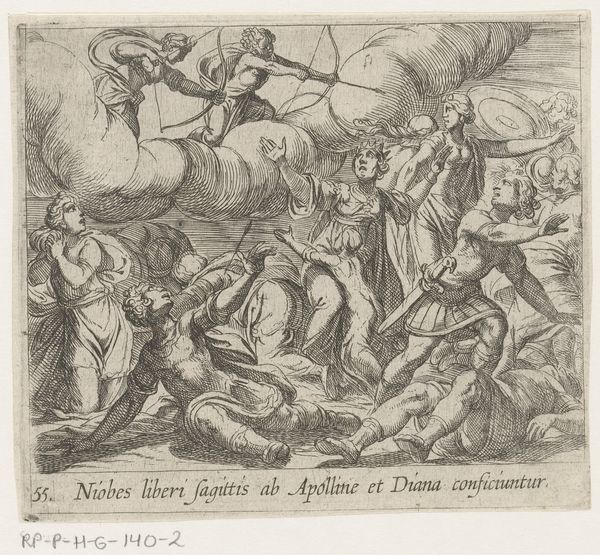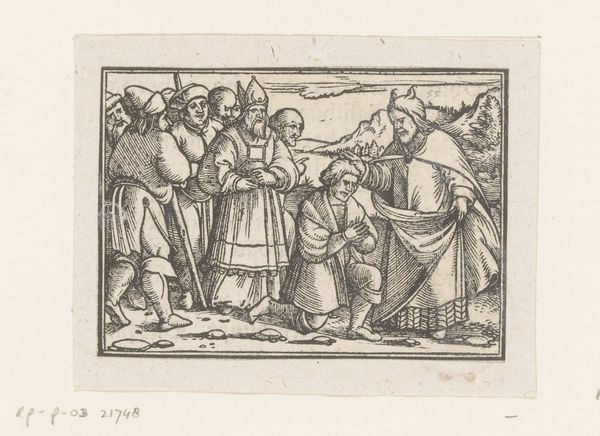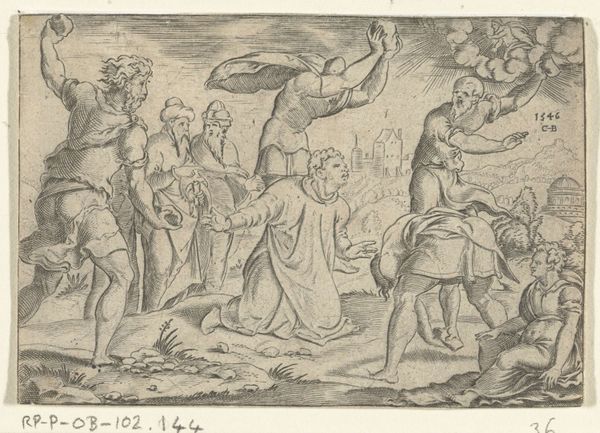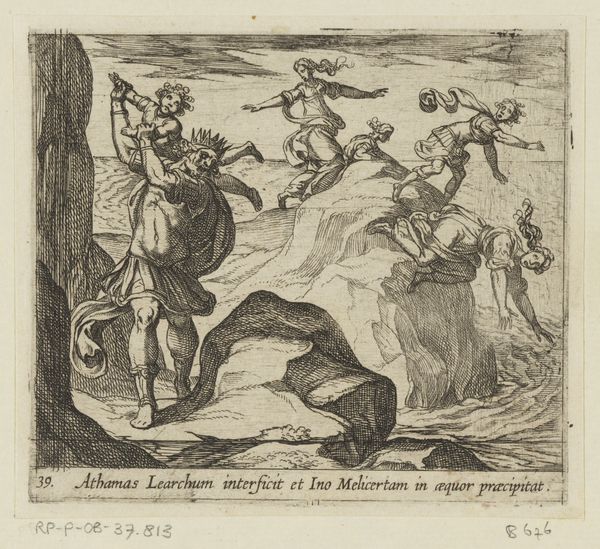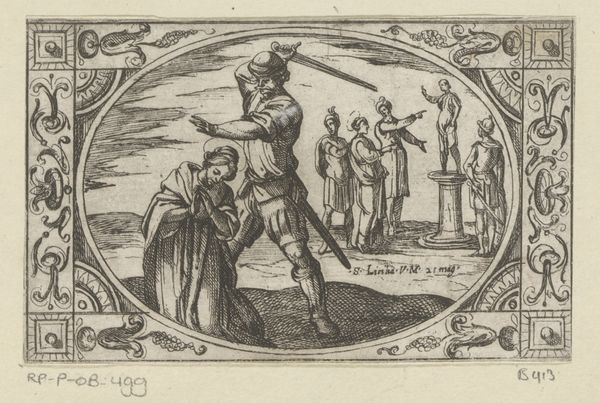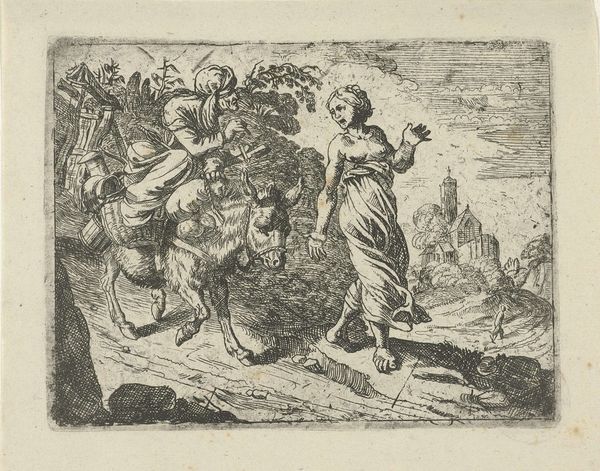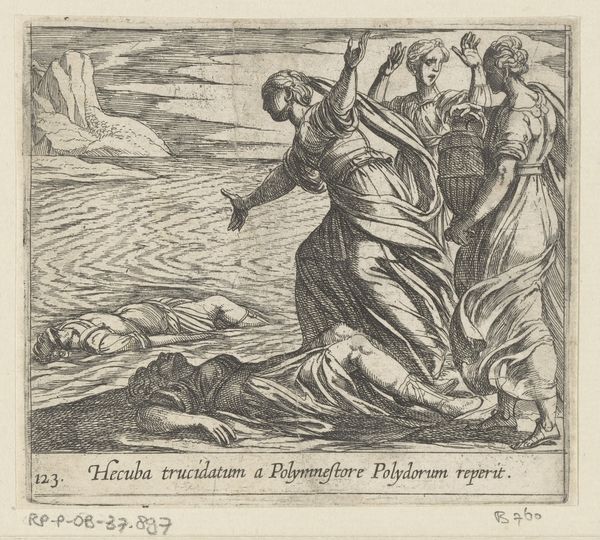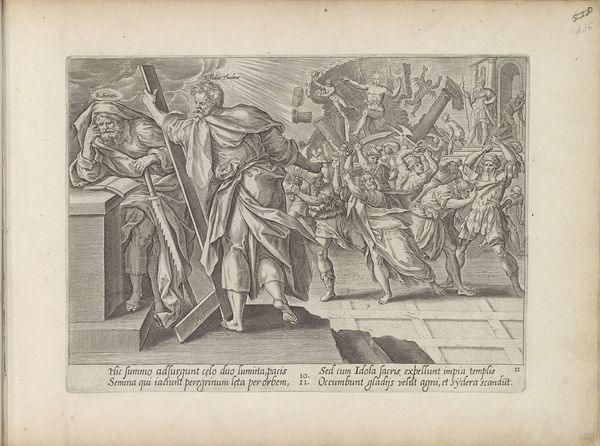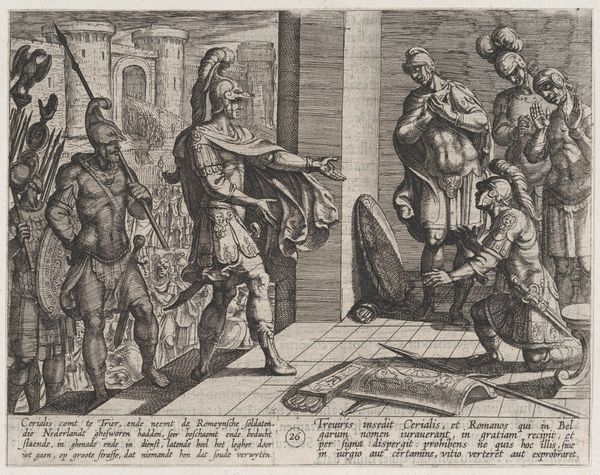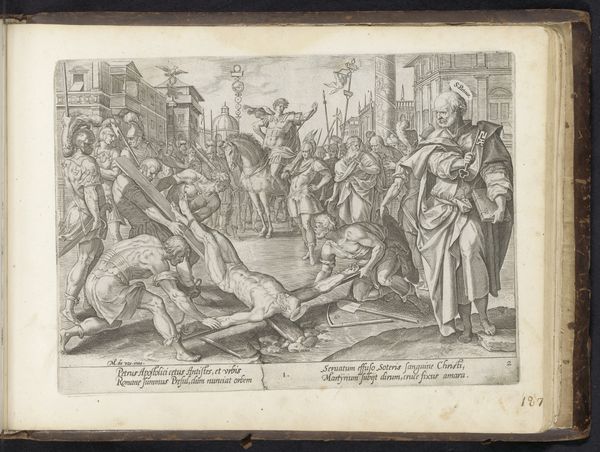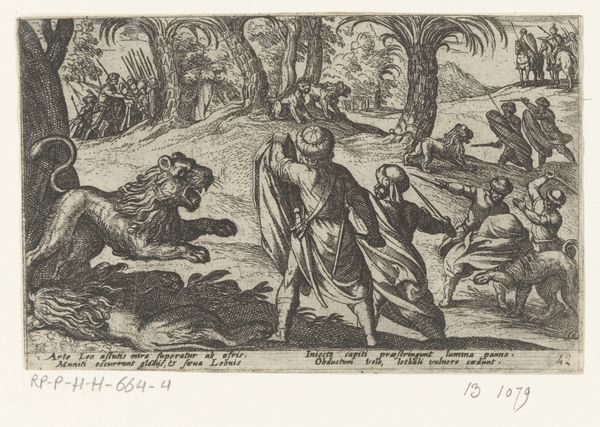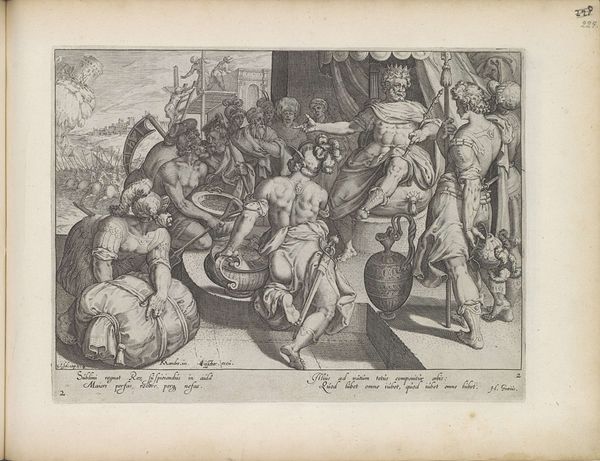
print, engraving
#
narrative-art
#
baroque
# print
#
figuration
#
genre-painting
#
history-painting
#
engraving
Dimensions: height 104 mm, width 117 mm
Copyright: Rijks Museum: Open Domain
Antonio Tempesta created this engraving, “The Greeks kidnap Hecuba,” around 1600, depicting a scene from the aftermath of the Trojan War. The image is more than a simple illustration; it's a commentary on power, gender, and the spoils of war. Hecuba, the Queen of Troy, becomes a prize, a symbol of the defeated city. The image creates meaning through visual codes, and historical associations. Tempesta was working in Italy, a region steeped in the classical tradition, yet also experiencing its own political turmoil. The print speaks to the ever-present realities of conflict and conquest. By depicting this scene, Tempesta engages with a long tradition of artists using classical narratives to comment on the social structures of their own time. Understanding this print requires us to delve into classical literature, Renaissance social history, and the political function of art. The study of prints and engravings, in particular, benefits from consulting a print catalogue raisonné to know more about the context in which it was made.
Comments
No comments
Be the first to comment and join the conversation on the ultimate creative platform.
